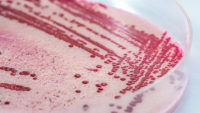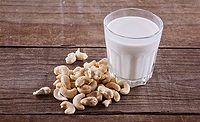Nanotechnology in the Food Industry: A Short Review

The benefits of nanotechnology for the food industry are many and are expected to grow with time. This new, rapidly developing technology impacts every aspect of the food system from cultivation to food production to processing, packaging, transportation, shelf life and bioavailability of nutrients. Commercial applications of nanomaterials will continue to impact the food industry because of their unique and novel properties. Human exposure to nanomaterials, as a result, is increasing and will continue to increase with time. Therefore, the health impact of nanomaterials in food is of public interest and concern. Public acceptance of food and food-related products containing nanomaterials will depend on their safety. Consequently, a uniform international regulatory framework for nanotechnology in food is necessary.
Introduction
The National Nanotechnology Initiative in the U.S. defines nanotechnology as the understanding and control of matter at a nanoscale where unique phenomena enable novel applications. Nanomaterials are further defined as substances between 1 and 100 nm in size showing physical, chemical and biological properties that are not found in bulk samples of the same material.[1] Their extremely small size and high surface area are associated with their greater strength, stability and chemical and biological activities. Therefore, nanotechnology enables development of novel materials with a wide range of potential applications. Nanomaterials are used in a variety of consumer, medical, commercial and industrial products.[1] Because nanotechnology is an emerging, rapidly developing technology, very limited information about it is currently available.
 What food technologists and engineers are doing to improve the safety of our food supply seems limited only by one’s imagination, and nanotechnology opens the door to a whole new array of products (Figure 1). Fresh fruits, vegetables, meat and poultry products are potential vehicles for the transmission of human pathogens leading to foodborne disease outbreaks,[2] which draw public attention to food safety. Therefore, there is a need to develop new antimicrobials to ensure food safety. Because of the antimicrobial properties of nanomaterials, nanotechnology offers great potential for novel antimicrobial agents for the food and food-related industries. The use of nano-antimicrobial agents added directly to foods or through antimicrobial packaging is an effective approach. As a result, the use of nanotechnology by the food and food-related industries is expected to increase, impacting the food system at all stages from food production to processing, packaging, transportation, storage, security, safety and quality.[3,4]
What food technologists and engineers are doing to improve the safety of our food supply seems limited only by one’s imagination, and nanotechnology opens the door to a whole new array of products (Figure 1). Fresh fruits, vegetables, meat and poultry products are potential vehicles for the transmission of human pathogens leading to foodborne disease outbreaks,[2] which draw public attention to food safety. Therefore, there is a need to develop new antimicrobials to ensure food safety. Because of the antimicrobial properties of nanomaterials, nanotechnology offers great potential for novel antimicrobial agents for the food and food-related industries. The use of nano-antimicrobial agents added directly to foods or through antimicrobial packaging is an effective approach. As a result, the use of nanotechnology by the food and food-related industries is expected to increase, impacting the food system at all stages from food production to processing, packaging, transportation, storage, security, safety and quality.[3,4]
Food Ingredients for Color, Texture and Flavor
The food industry is beginning to use nanotechnology to develop nanoscale ingredients to improve color, texture and flavor of food.[5,6] The nanoparticles TiO2 and SiO2[7,8] and amorphous silica[8,9] are used as food additives. TiO2 is used as a coloring in the powdered sugar coating on doughnuts.
Food Production and Packaging
Nanomaterials used for food packaging provide many benefits such as improved mechanical barriers, detection of microbial contamination and potentially enhanced bioavailability of nutrients. This is perhaps the most common application of nanotechnology in food and food-related industries.[10] A number of nanocomposites, polymers containing nanoparticles, are used by the food industry for food packaging and food contact materials.[11] The use of ZnO and MgO nanoparticles for food packaging has been reported.[7] Amorphous silica is used in food and in food containers and packaging.[5,8,9] Engineered water nanostructures generated as aerosols are very effective at killing foodborne pathogens such as Escherichia coli, Listeria and Salmonella on steel food production surfaces.[12] Such food contact substances containing nanomaterials have the potential of migrating from food packaging into food, so this technology still must demonstrate regulatory compliance before it gains wide-spread acceptance in the industry.
Nutrients and Dietary Supplements
Nanomaterials are used as ingredients and additives (e.g., vitamins, antimicrobials, antioxidants) in nutrients and health supplements for enhanced absorption and bioavailability.[13]
Food Storage
The antimicrobial properties of nanomaterials enable them to preserve food during storage and transport.[5,14,15] Nanosensors can be used for a variety of applications. Commercial use of nanosensors has been reported to check storage conditions[14] and during food transport in refrigerated trucks for temperature control.[15]
Food Nanosensors
Nanomaterials are used as sensors to detect contamination and regulate the food environment. They can detect microbial and other food contaminants. Therefore, they are used as sensors in food production and at packaging plants. They can monitor the condition of food during transport and storage.[14,15] They can detect nutrient deficiency in edible plants, and dispensers containing nutrients can deliver them to plants when needed. Therefore, nanomaterials can be used as nanosensors and nanotracers with almost unlimited potential by the food industry.[16]
Food Safety
Consumers are exposed to nanomaterials by consumption of food and beverages containing these extremely small particles of large reactive surface area of unknown safety. Once absorbed in the gastrointestinal system, they may bioaccumulate in various organs of the body, leading to potentially adverse effects. Thus, application of nanotechnology by the food industry is of public concern. Public acceptance of food and food products containing nanomaterials depends on their perceived safety. An editorial entitled “Nanofood for Thought” in the journal Nature Nanotechnology says, “The food industry will only reap the benefits of nanotechnology if issues related to safety are addressed and companies are more open about what they are doing.”[17]
In March 2009, the scientific committee of the European Food Safety Agency published an opinion on nanoscience and nanotechnology regarding food and animal feed safety.[18] A guidance document on how to assess potential risks associated with certain food-related uses of nanotechnology followed in May 2011, providing practical recommendations to regulators on how to assess applications from industry to use engineered nanomaterials in food additives, enzymes, flavorings, food contact materials, novel foods, food supplements, feed additives and pesticides. The U.S. Food and Drug Administration (FDA) has issued a draft guidance for industry use of nanomaterials in animal feed.[19] However, more research is required to determine the impact of nanomaterials in food on human health to ensure public safety and improve public communication of the safe use of such materials in our food supply. Some test methods for nanomaterial safety assessment have been reported.[20,21] However, no internationally accepted standard protocols for toxicity testing of nanomaterials in food or feed are currently available. Such protocols are in the development stage by organizations such as the International Alliance for Nano Environment, Human Health and Safety Harmonization[22] and the U.S. National Research Council.[23] A uniform international regulatory framework for the evaluation of nanotechnology is a necessity for both food and animal feed.
Conclusions
The benefits of nanotechnology use by the food industry are many and expected to grow. This new, rapidly developing technology impacts every aspect of the food system from production to processing, packaging, transportation, shelf life and bioavailability. Commercial applications of nanomaterials in the food industry will grow because of their unique and novel properties. Human exposure to nanomaterials will continue to increase. Therefore, the health impact of nanomaterials in food is of prime public concern. The ability to quantify the nanomaterial throughout the food life cycle is critical for manufacturing consistency, safety and potential benefits of the consumer product. Public acceptance of food and food-related products containing nanomaterials will depend on their safety. A uniform international regulatory framework for nanotechnology in food is a must.
The views presented in this article are those of the authors and do not necessarily reflect the views of FDA.
A. Wallace Hayes, Ph.D., is a visiting scientist at the Harvard T.H. Chan School of Public Health.
Saura C. Sahu, Ph.D., is a research chemist at FDA’s Center for Food Safety and Applied Nutrition.
References
1. www.gao.gov/new.items/d10549.pdf.
2. Berger, CN et al. 2010. “Fresh Fruits and Vegetables as Vehicles for the Transmission of Human Pathogens.” Environ Microbiol 12:2385–2397.
3. Cushen, M et al. 2012. “Nanotechnologies in the Food Industry: Recent Developments, Risks and Regulation.” Trends Food Sci Technol 24:30–46.
4. Berekaa, MM. 2015. “Nanotechnology in Food Industry: Advances in Food Processing, Packaging and Food Safety: A Review.” Int J Curr Microbiol App Sci 4(5):345–357.
5. Kessler, R. 2011. “Engineered Nanoparticles in Consumer Products: Understanding a New Ingredient.” Environ Health Perspect 119(3):A120–A125.
6. Morris, VJ et al. 2011. “Atomic Force Microscopy as a Nanoscience Tool in Rational Food Design.” J Sci Food Agric 91:2117–2125.
7. Gerloff, K et al. 2009. “Cytotoxicity and Oxidative DNA Damage by Nanoparticles in Human Intestinal Caco-2 Cells.” Nanotoxicol 3(4):355–364.
8. Uboldi, C et al. 2012. “Amorphous Silica Nanoparticles Do Not Induce Cytotoxicity, Cell Transformation or Genotoxicity in Balb/3T3 Mouse Fibroblasts.” Mutat Res 745(1-2):11–20.
9. Oberdorster, G et al. 2005. “Nanotoxicology; An Emerging Discipline Evolving from Studies of Ultrafine Particles.” Environ Health Perspect 113:823–839.
10. Bradley, EL et al. 2011. “Applications of Nanomaterial in Food Packaging with a Consideration of Opportunities for Developing Countries.” Trends Food Sci Technol 22:604–610.
11. Llorens, A et al. 2012. “Metallic-Based Micro- and Nanocomposites in Food Contact Materials and Active Food Packaging.” Trends Food Sci Technol 24:19–20.
12. Pyrgiotakis, G et al. 2015. “Inactivation of Foodborne Microorganisms Using Engineered Water Nanostructures (EWNS).” Environ Sci Technol 49(6):3737–3745.
13. Chaudhry, Q et al. 2008. “Applications and Implications of Nanotechnologies for the Food Sector.” Food Addit Contam 25(3):241–258.
14. Bouwmeester, H et al. 2009. “Review of Health Safety Aspects of Nanotechnologies in Food Production.” Regul Toxicol Pharmacol 53:52–62.
15. Buzby, JC. 2010. “Nanotechnology for Food Applications: More Questions Than Answers.” J Consumer Affairs 44(3):528–545.
16. Moraru, CI et al. 2003. “Nanotechnology: A New Frontier in Food Science.” Food Technol 57:24–29.
17. Nature Nanotechnology. 2010. “Nanofood for Thought.” Nature Nanotechnol 5:89.
18. www.efsa.europa.eu/en/topics/topic/nanotechnology.
19. www.regulations.gov.
20. Handy, RD and BJ Shaw. 2007. “Toxic Effects of Nanoparticles and Nanomaterials: Implications for Public Health, Risk Assessment and the Public Perception of Nanotechnology.” Health Risk Society 9(2):125–144.
21. iopscience.iop.org/article/10.1088/1742-6596/617/1/012032/pdf.
22. Maynard, AD et al. 2006. “Safe Handling of Nanotechnology.” Nature 444:267–269.
23. National Research Council. Toxicity Testing in the 21st Century: A Vision and a Strategy (Washington, DC: National Academy Press, 2007).
Looking for a reprint of this article?
From high-res PDFs to custom plaques, order your copy today!






